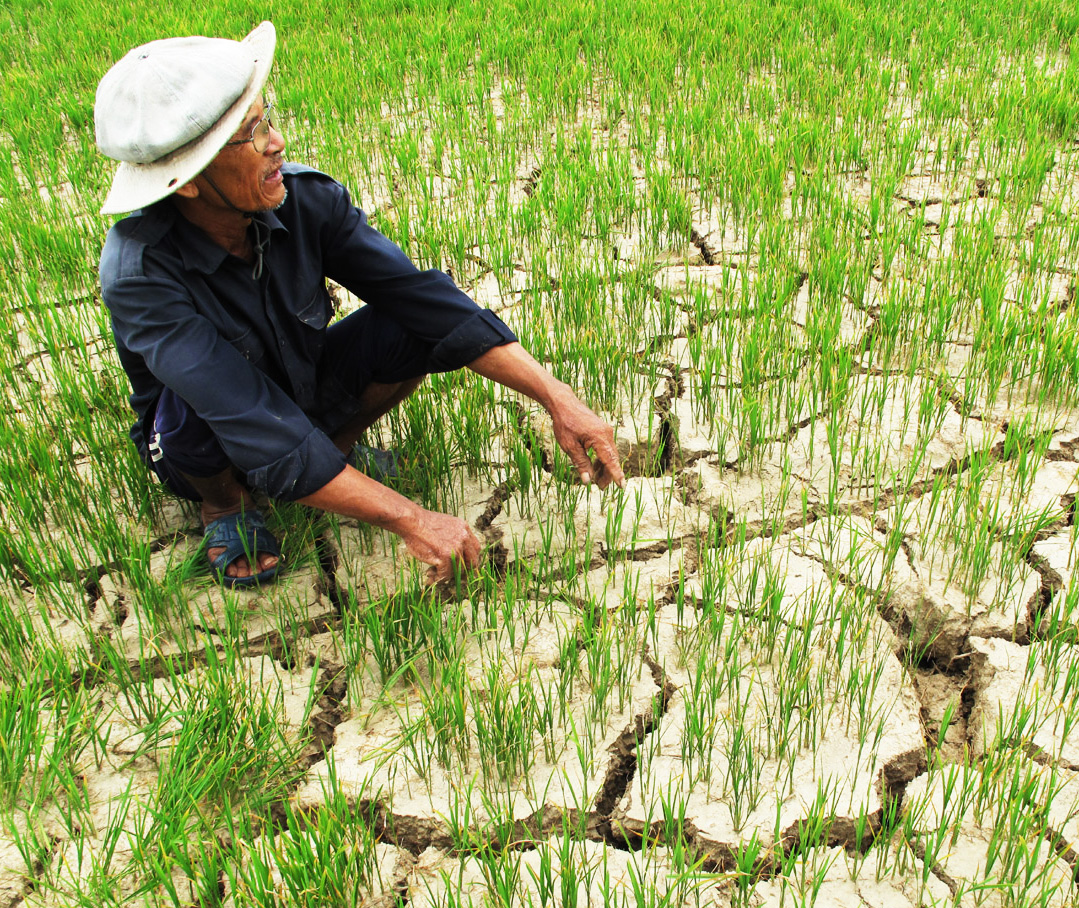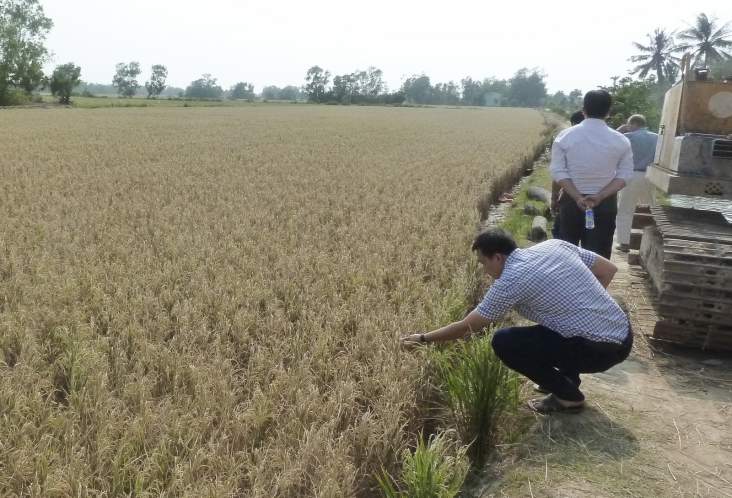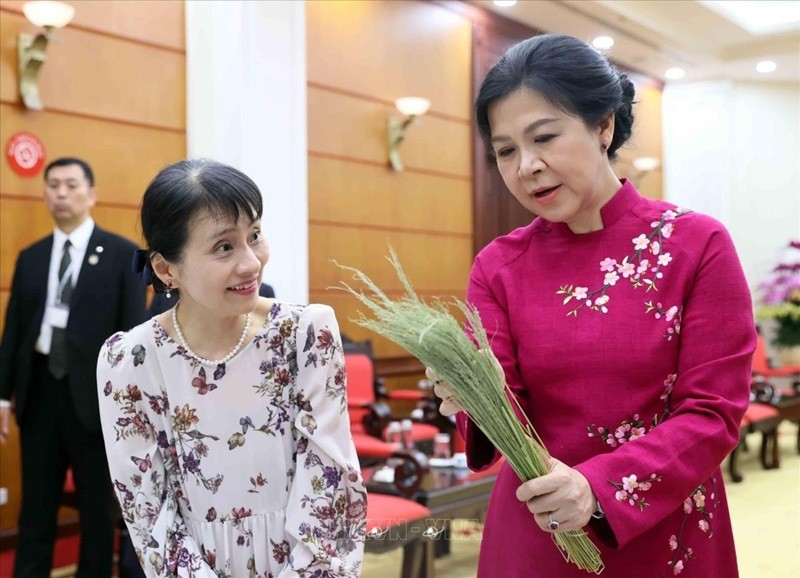Vietnam: Response to drought and saltwater intrusion
(VNF) - Vietnam’s Government is leading the humanitarian response and recovery at the national level and in the affected provinces.
In all three affected regions, rainfall has continued over the past month as part of the on-going rainy season. In a few occasions, heavy to very heavy rainfall has caused localized inundation or flash floods, particularly in the Central Highlands. River water levels in the upstream Mekong Delta have peaked and are gradually decreasing over the coming weeks. This year’s water levels in the Mekong were higher than in 2015, but below average.
Currently, the El Niño Southern Oscillation (ENSO) phenomenon is in a neutral state, meaning no El Niño nor La Niña. According to an updated forecast of the National Center for Hydro-Meteorological Forecasting (NCHMF) on October 14th, there is a 50 to 55 per cent probability of La Niña conditions occurring from November this year, with a low intensity and short duration. As a consequence of this, the annual storm season will end later, the North-East monsoon will start earlier and flooding will occur more frequently than in 2015, particularly in Central Vietnam.
 |
Drought, salt water intrusion stunt agriculture growth. (Source: Internet)
In terms of forecast for the 2016/17 dry season (November to April), river water levels are expected to be: 15-35 per cent lower than average in the Mekong Delta; 20-60 per cent lower than average in the Central Highlands and 70 per cent lower than average in the South-Central region. For all three regions, rainfall will be slightly higher than average in the coming months (Nov. 2016-Feb. 2017), but lower in the months after.
Drought conditions are expected for the coming dry season in the Central Highlands, but not as severe as in 2015/16. The Mekong Delta will also be affected by higher than normal rates of salinity intrusion, but less severe than last year.
Historic drought and saltwater intrusion
Since 2014, the longest and strongest ever El Niño drought and saltwater intrusion has severely affected one third of Vietnam, in areas producing key agricultural outputs such as rice, coffee, pepper, fruit, sugarcane and seafood.
During the peak of the drought (February-May 2016), an estimated 2 million people did not have access to water for consumption and domestic use, 1.1 million were food insecure and more than 2 million people lost incomes due to damaged or lost livelihoods. Risks of water related diseases and severe acute malnutrition also significantly increased.
A total of 659,476ha of crops have been damaged or lost; 273,122ha rice, 168,064ha perennial crops, 35,868ha fruit trees and 30,805ha vegetables and other crops. 69,009ha of aquaculture have been affected and over 8,337 animals died. Vietnam’s Government estimates the total economic loss at VND 15,032 billion (approximately USD 674 million) or 0.35 per cent of the national GDP, with for the first time in decades a negative agricultural growth of 0.18 per cent.
Actions to support community
The Government is leading the humanitarian response and recovery at the national level and in the affected provinces. Emergency coordination and recovery is facilitated by the Ministry of Agriculture and Rural Development (MARD) as the Standing Office of the Central Committee for Natural Disaster Prevention and Control (CCNDPC), hereby supported by the UN and in collaboration with INGOs, the Red Cross and other humanitarian partners.
Since 2015, the Government has effectively responded to emergency needs by providing rice, water and other food, distributing water purification tablets, upgrading or repairing water infrastructure, delivering agricultural inputs and financial aid, for a total value of approximately USD 60.5 million.
As of September 2016, drought hydro-meteorological conditions are over in all three regions. Rains have commenced but are scattered and insufficient. However, drought impact for affected households is still lingering and needs are pertinent particularly in terms of water storage and purification, hygiene and nutrition support, disease surveillance and response, and livelihood recovery.
In addition, significant investment is needed in short, medium and long term resilience-oriented drought recovery measures, in combination with access to climate information services, early warning and multi-hazard preparedness measures, particularly in light of a possible La Niña and recurrent drought.
 |
Vietnam’s research centers visited a rice field in Tra Vinh Province, which is being affected by the drought. (Source: Internet)
By October, 54.4 per cent or USD 26,382,842 million of the Emergency Response Plan (ERP) appeal has been funded. In addition to Government funding, major donors are: ADB, CERF, VNRC-IFRC-DREF, Government of Japan, ECHO, USAID, Coca Cola and FAO.
Out of the total emergency funding, the UN has mobilized USD 8,558,988 million for life-saving WASH, nutrition, food security, health and early recovery interventions. This includes USD 3.9 million allocated from the Central Emergency Response Fund (CERF) Rapid Response Window.
Recovery funding as estimated by the Government is USD 368 million for 2017 and USD 687 million for 2018-20.
On October 24th, the Government jointly with the UN has launched a Drought Recovery Plan, integrated into the existing ERP. The plan is the result of extensive consultations with technical experts from the 18 most affected provinces, NGOs, Red Cross and development partners. It identifies priority investments from now until 2020 to ensure a resilient drought recovery, in particular for the most vulnerable.
The plan as well as commitments from partners to support the recovery efforts will be further discussed at a CCNDPC-UNDP workshop mid-November./.
Minh Phuong
Recommended
 National
National
50 Years of National Reunification: Vietnam’s Spectacular Transformation
 National
National
Spouses of Vietnamese, Japanese Leaders Engage in Making 'Banh Com'
 National
National
Vietnam News Today (Apr. 28): Vietnam–Japan Friendship Concert Celebrates Peace and Solidarity
 Focus
Focus
Letters That Carried Nation’s Destiny
 National
National
Vietnam News Today (Apr. 27): Vietnam’s 1975 Victory Hailed as Global Milestone in 20th Century
 National
National
Vietnamese Diplomacy’s Contribution to the Liberation of the South and National Reunification – Enduring Historical Lessons
 National
National
Vietnam News Today (Apr. 26): Vietnam-Laos Relations Vital to Revolutionary Cause in Each Country
 National
National
